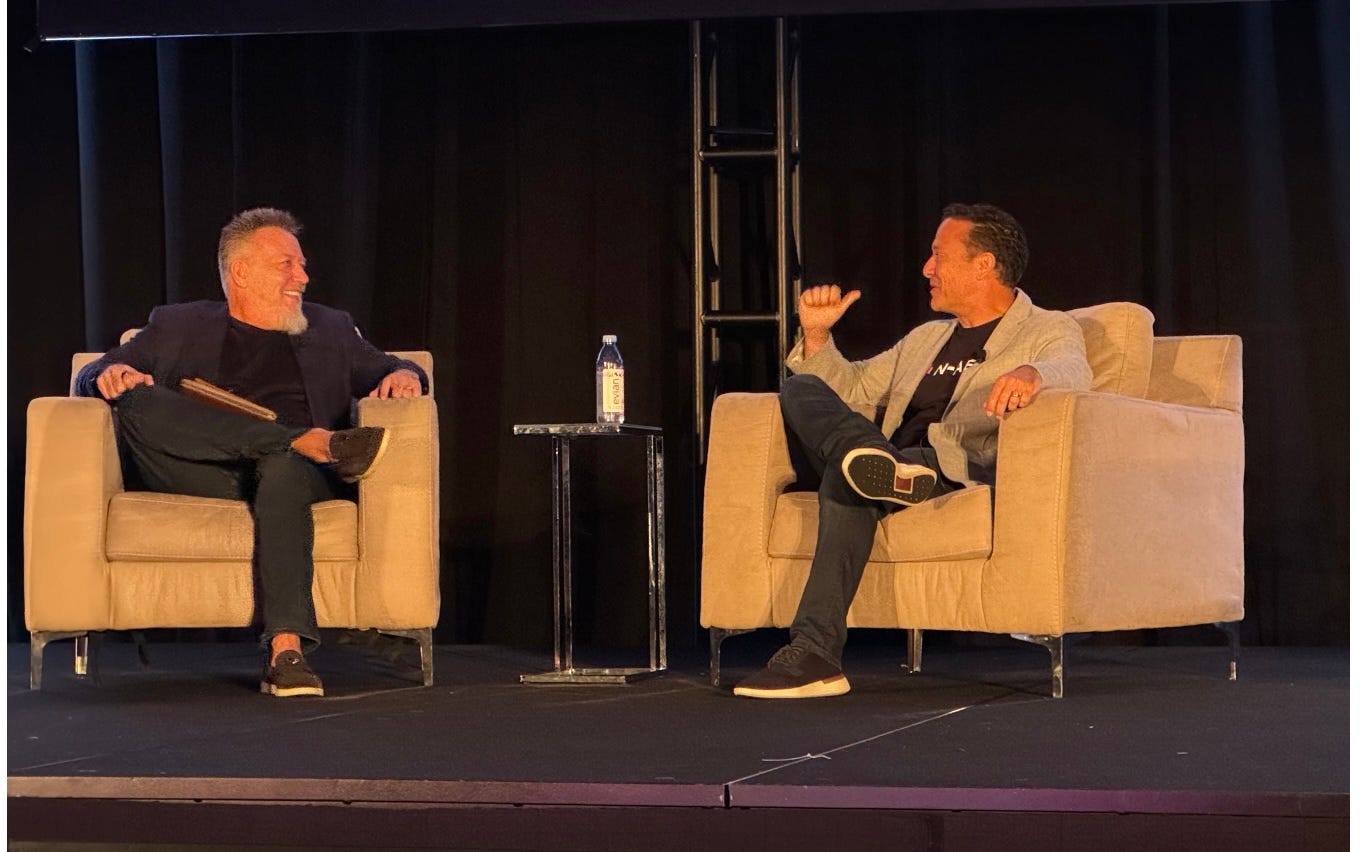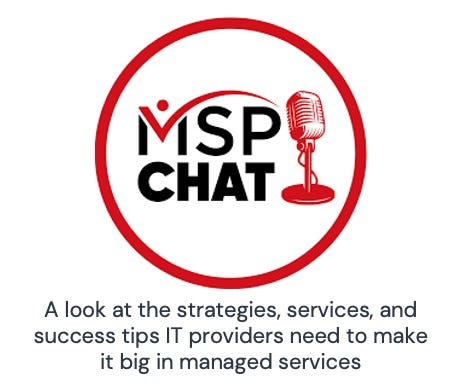There’s Power in Numbers for MSPs
And small providers need to consider the implications. Plus: a look at agentic AI pricing that succeeds only in demonstrating it’s a very complex topic.
Is the managed service market getting bigger or smaller?
Based on data from Canalys, it depends a little on what you’re measuring. On the one hand, global managed services revenue topped half a trillion dollars for the first time ever in 2024 following 9.7% year-over-year growth. On the other, the number of channel partners delivering managed services actually shrank by 0.6%.
So more spending, yet fewer companies competing for it. Are the massive sums of private equity dollars pouring into managed services and the mega MSPs emerging from all that investment concentrating more end user dollars in fewer hands?
Absolutely yes, according to Tim Conkle, CEO of The 20, a fast-growing mega (albeit without private equity backing) covered here before that’s acquired 41 MSPs in under three years. “Consolidation is happening in this industry,” he said recently at the company’s annual Vision event in Dallas.
Now, strictly speaking the managed services market won’t actually be meaningfully consolidated until the industry’s top four competitors command a good 40% of its revenue, based on how economists measure such things anyway. And safe to say it’ll be a while before that happens given that even after the ever-so-slight reduction Canalys recorded there are still 335,385 MSPs.
But there’s no denying that there are some pretty big MSPs out there buying up a whole lot of smaller ones (92 in Q2 alone, in fact, according to Drake Star).
“We have billion-dollar MSPs, more than one,” said John Pagliuca, president and CEO of N-able, about that company’s partner base at Vision. “What was 17 MSPs a year ago is now one MSP.”
Which leaves smaller MSPs with two questions to at least ponder:
Question 1. Should I sell? The answer is obvious if you’re The 20, Evergreen Services Group, Meriplex, New Charter, or anyone else building a nation-spanning practice that believes a) it’s going to be extremely hard very soon for a small MSP to beat them, and b) “if you can’t beat ’em, join ’em” is genuinely in a small MSP’s interest here.
Not everyone sees it that way though. “There’s a large group of people out there that like to do business with other small businesses and keep it local,” says Rayanne Buchianico, managing partner at M&A consultancy SellMyMSP. “I don’t know that that’s ever really going to end entirely in this country anytime soon.” If she’s right and you have a loyal, satisfied base of customers who prefer small and local to big and national, there’s no reason to think you can’t keep doing what you’ve been doing despite competition from “the bigs,” as Conkle calls them.
Pagliuca (pictured right, opposite Conkle) mostly agrees. If you’re running a nice little “lifestyle business” somewhere outside the NFL cities and you’re happy that way, he says, you’ll probably be fine. If you’re looking to grow something that produces meaningful wealth in a location also served by the bigs, however, you may be in for some pain.
“It’s going to be hard to compete with that group that has a thousand technicians,” Pagliuca says. “Not that you can’t exist, but what is the existence?”
A tougher one than you’re used to, most likely, given that the companies you’ll be competing with will have pricing power you can’t match as well as 24/7 help desks, SOCs, and in-house AI labs you can’t afford.
“There’s power in numbers,” Pagliuca observes.
Personal service won’t necessarily level the playing field either. 78% of job applicants prefer AI interviewers to human ones today, before artificial voice and video have fully matured. It’s entirely plausible that the millennial and Gen Z customers you’ll increasingly be selling to in the near future will feel the same way about AI versus human help desk technicians.
There is a path forward for MSPs of modest means who wish to both build wealth and remain independent though, according to Pagliuca, and it involves the “f” word.
“That ‘f’ word is focus,” he says. “Don’t try to spread yourself too thin.”
Meaning target customers of a very specific size in a very specific industry and very specific place, standardize what you offer them, and lean hard on outsourcers and offshoring for NOC, SOC, and other services you can’t provide yourself. Focused MSPs enjoy 15, 20, or even 30 percent EBITDA percentages, according to Pagliuca. Unfocused ones are lucky to reach 7 percent.
“It’s really counterproductive,” he says. “You’re just working hard for not much gain.”
So yes, Pagliuca believes, smaller MSPs can make it on their own against much larger peers, but only if they adapt what they’ve done before to what the market demands now.
Question 2. Can I sell? Probably yes if you’ve got a profitable business with satisfied clients. Probably not, however, if you’re doing less than $5 million a year, which is pretty much as low as the bigs will go when hunting acquisitions.
“It’s a very small subset of companies that they’re all competing for,” says Amy Babinchak, another managing partner at SellMyMSP, who marvels at how stubbornly the rollups refuse to look at anyone else. “The market that you’d be able to choose from and find the rose in is ten times or a hundred times larger,” she notes.
The trick, of course, is that integrating a newly acquired MSP is a lot of work. Most buyers would rather do it once for a $10 million MSP than 10 times for a bunch of $1 million MSPs. The 20, according to Conkle, is a rare exception because it operates a kind of accelerator for independent MSPs that uses the same standardized processes and tools as the rollup.
“80% of all the integration is done before we buy them,” he says, adding that he can acquire—and grant equity—to firms in the $500,000 to $600,000 range cost effectively as a result. That gives Conkle a much larger field of potential buyout targets to harvest while providing firms most of the bigs won’t even look at a way to be part of what theoretically will be a sizeable payday when The 20 sells to someone even larger.
Which may not be far off. “My strategy is every three to five years you turn the company,” Conkle says. “It doesn’t take a mathematician to figure out we’re three years in, which means probably in the next 12 months we will turn.” At which point just how big a second bite of the apple the 41 MSPs who’ve sold to The 20 so far get in return won’t be theory anymore.
A few additional points worth noting
1. Selling to The 20 or a PE-backed rollup isn’t the only way to become part of something bigger. Buying a small peer is a very real option as well.
“You can have five people in your company and buy another company that’s got two people in it,” says Babinchak (pictured right). “That’s becoming the norm for the lifecycle of an MSP now.”
There’s also an emerging set of venture capital-based rollups with a different value proposition than private equity equivalents. I have a future post about them in the works.
2. If you’re a small MSP looking for a realistic estimate of what you’re worth in the market today, SellMyMSP (which is celebrating its tenth anniversary) has recently launched a new, no-cost strategic exit assessment service that lets MSPs rate themselves on a set of variables potential buyers usually investigate.
“We ask them questions on everything—business structure, finance, sales and marketing, growth, their exit plans, etc.,” Buchianico (pictured left) says. When they’ve finished answering they get a customized report on how they rate and how to improve.
“We’ve been working with people one on one,” Babinchak says. “We know there are a lot more people who need help with this.” A self-serve self-evaluation offered free of charge is a great place for them to get started.
Doing the math on agentic AI pricing
The first clue I got that it might be time to revisit agentic AI pricing came a few weeks ago when I was reading Pax8’s very good white paper on “the agentic AI inflection point.”
My one and only post on pricing agentic solutions so far discussed the outcome-based schemes that Salesforce and Intercom among others were beginning to popularize in which users pay a flat fee every time agents complete a specific task along with the usage-based model made familiar by cloud infrastructure services. Pax8’s paper addresses both approaches, but also a third in which you charge a fixed monthly fee for every workflow you automate and a fourth in which you treat an agent like a virtual employee and charge the rough equivalent of a monthly salary.
Right there, we’ve doubled the number of approaches worth considering. The more I dive into the topic, though, the more I realize that Pax8 and I may both be exploring the tip of a much larger iceberg.
“There are ten fundamental price structures,” says Tim Smith (pictured), CEO of Chicago-based Wiglaf Pricing. Meaning for anything, versus AI, but any one of them at least theoretically could be a fit for the agentic solutions MSPs will soon be designing and delivering in big numbers.
For simplicity’s sake, however, let’s start with outcome-based pricing as everyone else does these days. Seems pretty straightforward, right? My solution resolved a customer service call, evaluated a resume, generated an invoice. Pay me.
Determining how much your customer pays is a little more involved than saying $1 per outcome sounds like a good clean number, though. You’ll lose customers if that turns out to be too much and you’ll lose money if it’s too little in relation to what you’re paying app and LLM suppliers. You’re also probably going to need a lot of agents to build a complete solution, and figuring out one price to charge for all of them won’t be easy.
“It’s a very complex commercial model to set up, and it gets more complex the more products you have in the mix and the more platforms you have in the mix,” says Andreas Welsch, founder and chief AI strategist of Intelligence Briefing.
Consumption-based pricing is simple and precise by comparison but can leave a lot of the value your solution delivers uncaptured. “Your two cents to write a blog post translates into $200, $500, or even $1,000 in savings for your customer,” observes Welsch.
Hence the logic of flat-rate pricing schemes, like the one Conkle, of The 20, is working on. “We’re going to look at everything that you’re doing, and then we’re going to show you where we can save ‘X’ amount of dollars,” he says, noting that the assessment won’t cost anything. “I just want a percentage of the dollars I save you.”
There’s a catch with models like that, however: What you charge customers every month stays the same, but what you pay upstream vendors doesn’t. Set your price for a service too low relative to what it costs to deliver or misjudge how much capacity your client consumes, and you can find yourself locked into a long-term deal with little to no margin. Welsch suspects that very issue is why OpenAI’s Sam Altman floated an unpopular switch from flat-rate to usage-based pricing for ChatGPT back in March.
“It was likely due to the fact that the models became more powerful and needed more resources, but the price was still fixed at $20 per user per month for ChatGPT Plus, which it still is,” he says.
What you’re ultimately looking for, Smith notes, is a model that combines usage-based pricing’s firm margins with flat-rate pricing’s value-capturing potential. Same goes for electrical utilities, as it happens, which is why your power bill probably combines a variable fee for the kilowatt hours you consume with a fixed charge for the value of having access to the grid.
That’s called “two-part tariff” pricing, according to Smith, and lacks the simplicity of just charging for outcomes, usage, workflows, or virtual FTEs. But a plan that offers predictable prices, predictable margins, and simplicity may be more than providers of agentic AI services can ever hope to enjoy.
There’s more from Kaseya on the podcast
Remember last week’s deep dive on what MSPs can expect from Kaseya going forward under the leadership of its new CEO? It was based entirely on the interview in the latest episode of my podcast, MSP Chat. Watch! Listen! Subscribe! Rate! Review!
Also worth noting
The new edition of ScalePad’s Lifecycle Manager solution is designed to help MSPs turn asset lifecycle management reports into a basis for strategic growth conversations.
Colin Knox, founder and CEO of Gradient MSP, is now founder and CEO of PSA integrations specialist MSPCentric too.
Acronis Cyber Protect Cloud now offers integrated protection to AI PCs running Intel Core Ultra processors.
Blackpoint Cyber’s providing integrated MDR to NinjaOne partners.
KeeperAI is an agentic AI addition to Keeper Security’s privileged access management solution designed to detect, classify, and mitigate threats in real time.
Exaforce’s biggest twist on the AI SOC craze is it’s available as both a SaaS platform and a fully managed MDR service.
TD SYNNEX has inked a strategic collaboration agreement with AWS aimed at driving AI adoption, cloud migration, cloud modernization, and marketplace growth together.
ManageEngine calls the digital employee experience features it’s added to its Endpoint Central platform a “step towards complete autonomous endpoint management.”
MSP360 has added image-based backup and 5 TB of storage to its free backup solutions for personal users.
Alexander Quilter is the new chief product officer at Liongard.
Paul Redding is the new head of MSP partnerships at the aforementioned NinjaOne.
Bob Layton is the new CRO at Apptega.







